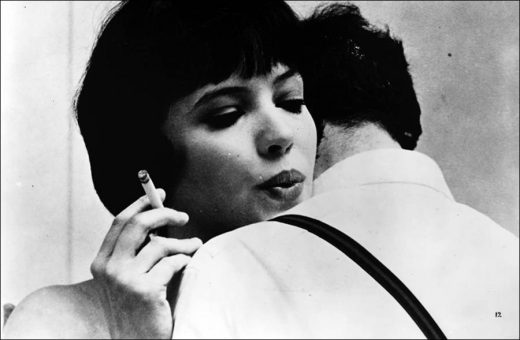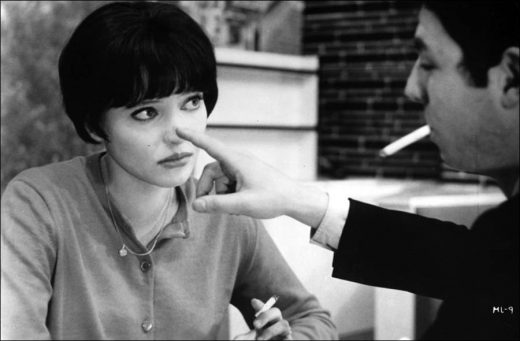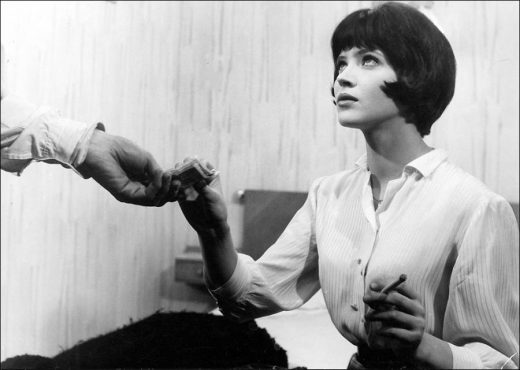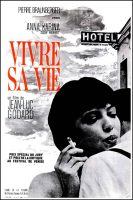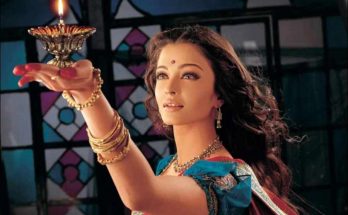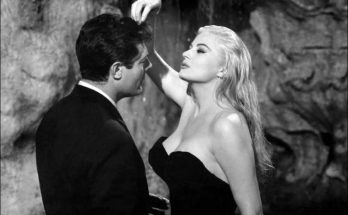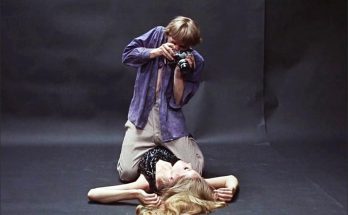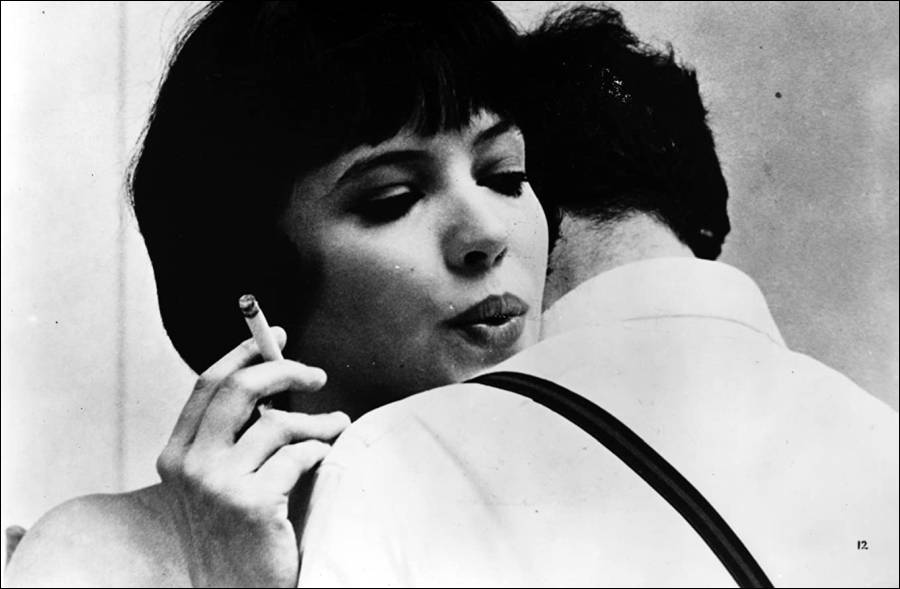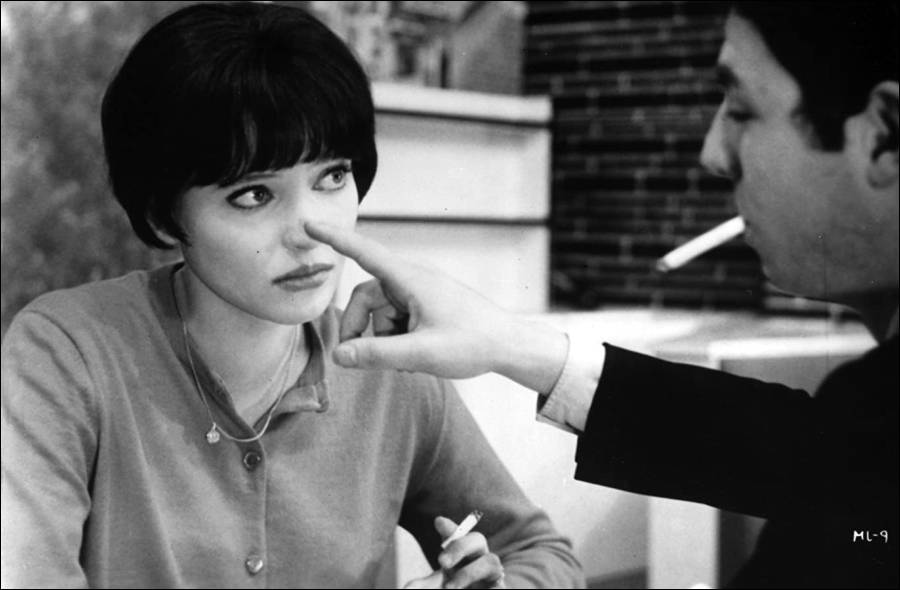“A bird is an animal with an inside and an outside. If you remove the outside, you will see the inside, and if you remove the inside, you will see the soul.”
Vivre Sa Vie: starts with this kind of daily and ordinary speeches, Vivre sa vie, made in 1962 by the master director Jean-Luc Godard. Translated into our language as “Living Your Life”, the film depicts Nana’s life at the age of 22, with a fictionalized of 12 independent paintings (chapters) to reshape her life upon a sharp decision. The influence on Godard is rooted in Sartre and Marleau-Ponty.
According to him, the movie literally belongs to the audience. Vivre sa vie, which consists of parts that do not provide integrity of the fiction, allows us to create and complete the back text in our minds, although it only offers certain sections from the life of the main character. According to Esen Çoşkun, the creation of this structure stems from the viewer’s experience or thought of similar things in a sense. (Movements in World Cinema, 2017, April)
Nana, the main character whose beauty and attractiveness is approved by her environment, decides to leave her husband and child with the dream of becoming an actress. We never witness the process of making this decision in the film, as the New Wave can devote minutes to the most ordinary scenes while skipping important scenes. The film begins with a scene where Nana’s reflected silhouette can be vaguely selected and we never see the face of her husband she is preparing to leave, which is a proof of Godard’s interesting management style.
What year, where does the movie take place and what interior spaces does it use? The New Wave films, usually shot on the streets of Paris with a handheld camera, are far from giving us a clue in this context. While the film continues in a context where the concepts of time and space are not considered and questioned, Godard has already succeeded in going beyond the traditional cinema patterns with this move.
Nora, who also conjures up Nora in a Baby House with a tiny name resemblance, has stepped out of the “safe and usual”, trying to draw the plan of her new life. The play, written by Henrik Gibsen, which took place in Norway in 1879, had a great impact compared to its period. The social role and gender stereotypes embroidered on women with the existing cultural impositions have been reversed in this play, and it has been deemed to be a “feminist text”. In Vivre Sa vie, while participating in a lonely woman’s life-sustaining adventure on the one hand, ordinary but striking dialogues that Nana enters with other people are of a nature that makes the audience think about life.
“Why do people always have to talk? Maybe we shouldn’t talk so much and live life in silence. The more we speak, the more words lose their meaning.”
II. Capitalism, which increased its power in America in the 30-35 years after World War II, experienced the most crowded and enthusiastic uprisings of the 20th century. Since the 1960s coincided with the turbulent period in terms of freedom movements, Godard, Une femme est une femme (Woman Is Woman, 1961), Le mepris (Hate, 1963), Une femme Mariee (A Married Woman, 1964), Masculine-Feminine (Male He discussed the social situation and prostitution of women in films such as – Female. Is it the body or spirit that is originally for sale? (Movements in World Cinema, 2017, April, Pg: 224)
It is noteworthy that Godard, who was married to his “inspirational fairy” Anna Karina for about six years, did not portray Karina naked on the camera in any of the erotic scenes, although she is depicting the life of a prostitute in her film. We see that Nana, who searches for her friend in the hotel, opens the doors of the rooms in the hotel one by one and the female bodies are reflected in the camera in aesthetic positions, resembling an ancient Greek sculpture. The scenes featuring naked bodies in the film were limited to this.
Nana Kleinfrankenheim, who managed to impress many men by using her beauty and charm, preserves her coolness until the last moment, but cannot stop without questioning her living conditions from within. The woman mentioned in Edgar Allen Poe’s poem Oval Portrait, which is read in the last painting of the film, combined with the way she is depicted and the camera angles preferred by Godard, reminds us of the stance and gaze that Nana repeats throughout the film.
“Sully’s (talking about the Sully wing of the Louvre Museum)” is a portrait that stands close to the style of the famous head portraits, technically speaking in the “vignette” style, consisting only of head and shoulders. The torso, arms and even the ends of that shiny hair melted away in the shadow of the deep darkness that formed the background. Artistically, perhaps nothing could be more admirable than this portrait.”
Vivre Sa vie, who managed to go up all the steps that the French New Wave is formally based on and become one of the most “cult” movies of the trend, is an ironic example of how a life that is tried to be created drives people to disappear. Nana, too, asks herself at that very last point, “What did I do wrong?”
We remember with love Anna Karina, whom we lost in the past days.
Vivre Sa Vie (1962)
Directed by: Jean-Luc Godard
Starring: Anna Karina, Sady Rebbot, André S. Labarthe, Guylaine Schlumberger, Gérard Hoffman, Monique Messine, Paul Pavel, Dimitri Dineff, Peter Kassovitz, Odile Geoffroy, Marcel Charton
Screenplay by: Jean-Luc Godard
Cinematography by: Raoul Coutard
Film Editing by: Jean-Luc Godard, Agnès Guillemot
Costume Design by: Christiane Fageol
Music by: Michel Legrand
MPAA Rating: None.
Distributed by: Panthéon Distribution
Release Date: September 20, 1962 (France)
Views: 301
